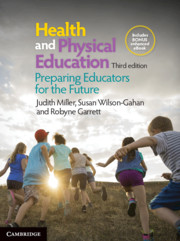28 results
5 - How Do Drugs Cause Harm?
-
- Book:
- How to Talk to Your Child About Drugs
- Published online:
- 13 February 2025
- Print publication:
- 06 March 2025, pp 72-97
-
- Chapter
- Export citation
Chapter 5 - Trauma in People with Intellectual Disability
-
-
- Book:
- The Frith Prescribing Guidelines for People with Intellectual Disability
- Published online:
- 07 November 2024
- Print publication:
- 21 November 2024, pp 61-73
-
- Chapter
- Export citation
5 - Elements of ‘Use of Force’
- from Part II - Elements of Prohibited Force
-
- Book:
- Prohibited Force
- Published online:
- 23 February 2024
- Print publication:
- 29 February 2024, pp 106-131
-
- Chapter
-
- You have access
- Open access
- HTML
- Export citation
Seed dormancy diversity of the mangrove plant community in Sri Lanka to assist in direct seeding and seedling transplanting restoration
-
- Journal:
- Seed Science Research / Volume 33 / Issue 2 / June 2023
- Published online by Cambridge University Press:
- 06 June 2023, pp. 107-117
-
- Article
- Export citation

Organizational Stress and Well-Being
-
- Published online:
- 23 February 2023
- Print publication:
- 02 March 2023
Occurrence and management of herbicide resistance in annual vegetable production systems in North America
-
- Journal:
- Weed Science / Volume 70 / Issue 5 / September 2022
- Published online by Cambridge University Press:
- 05 August 2022, pp. 515-528
-
- Article
-
- You have access
- Open access
- HTML
- Export citation
Conclusion
-
- Book:
- Believing in Dante
- Published online:
- 10 June 2022
- Print publication:
- 30 June 2022, pp 244-253
-
- Chapter
- Export citation
Chapter 8 - Hats, Nostromo, “The Secret Sharer” and The Secret Agent
- from Part III - Patterns and Preoccupations
-
- Book:
- Conrad's Decentered Fiction
- Published online:
- 10 March 2022
- Print publication:
- 17 March 2022, pp 148-165
-
- Chapter
- Export citation
7.5 - Follow-Up after Critical Illness
- from Section 7 - Comfort and Recovery
-
-
- Book:
- Intensive Care Medicine
- Published online:
- 27 July 2023
- Print publication:
- 01 December 2021, pp 666-670
-
- Chapter
- Export citation
The impact of child maltreatment on the mental and physical health of child victims: a review of the evidence
-
- Journal:
- BJPsych Advances / Volume 28 / Issue 1 / January 2022
- Published online by Cambridge University Press:
- 23 March 2021, pp. 60-70
- Print publication:
- January 2022
-
- Article
-
- You have access
- HTML
- Export citation
Evaluation of diverse germplasm of cowpea [Vigna unguiculata (L.) Walp.] against bruchid [Callosobruchus maculatus (Fab.)] and correlation with physical and biochemical parameters of seed
-
- Journal:
- Plant Genetic Resources / Volume 18 / Issue 3 / June 2020
- Published online by Cambridge University Press:
- 27 July 2020, pp. 120-129
-
- Article
- Export citation
4 - Physically educated: Developing children’s health and wellbeing through learning in the physical dimension
- from Part 2 - Dimensions of health and wellbeing
-
-
- Book:
- Health and Wellbeing in Childhood
- Published online:
- 30 November 2020
- Print publication:
- 16 June 2020, pp 55-76
-
- Chapter
- Export citation
Assessing functioning in adolescents with chronic fatigue syndrome: psychometric properties and factor structure of the School and Social Adjustment Scale and the Physical Functioning Subscale of the SF36
-
- Journal:
- Behavioural and Cognitive Psychotherapy / Volume 48 / Issue 5 / September 2020
- Published online by Cambridge University Press:
- 01 April 2020, pp. 546-556
- Print publication:
- September 2020
-
- Article
- Export citation

Health and Physical Education
- Preparing Educators for the Future
-
- Published online:
- 14 February 2020
- Print publication:
- 19 September 2018
-
- Book
- Export citation
9 - Integration and general capabilities
- from Part 3 - How: embedding the Arts in education
-
- Book:
- Teaching the Arts
- Published online:
- 26 June 2020
- Print publication:
- 02 July 2019, pp 252-274
-
- Chapter
- Export citation
4 - Hearsay
-
- Book:
- Australian Uniform Evidence Law
- Published online:
- 12 April 2019
- Print publication:
- 22 February 2019, pp 116-180
-
- Chapter
- Export citation
10 - Assessment in health and physical education
-
- Book:
- Health and Physical Education
- Published online:
- 14 February 2020
- Print publication:
- 19 September 2018, pp 211-238
-
- Chapter
- Export citation
Treatment Alternatives and Timing Affect Seeds of African Mustard (Brassica tournefortii), an Invasive Forb in American Southwest Arid Lands
-
- Journal:
- Invasive Plant Science and Management / Volume 6 / Issue 4 / December 2013
- Published online by Cambridge University Press:
- 20 January 2017, pp. 559-567
-
- Article
- Export citation
Interspecific Differences in Weed Susceptibility to Steam Injury
-
- Journal:
- Weed Technology / Volume 22 / Issue 4 / December 2008
- Published online by Cambridge University Press:
- 20 January 2017, pp. 719-723
-
- Article
- Export citation
Composting of poultry dead birds and litter
-
- Journal:
- World's Poultry Science Journal / Volume 71 / Issue 4 / December 2015
- Published online by Cambridge University Press:
- 02 December 2015, pp. 621-629
- Print publication:
- December 2015
-
- Article
- Export citation

